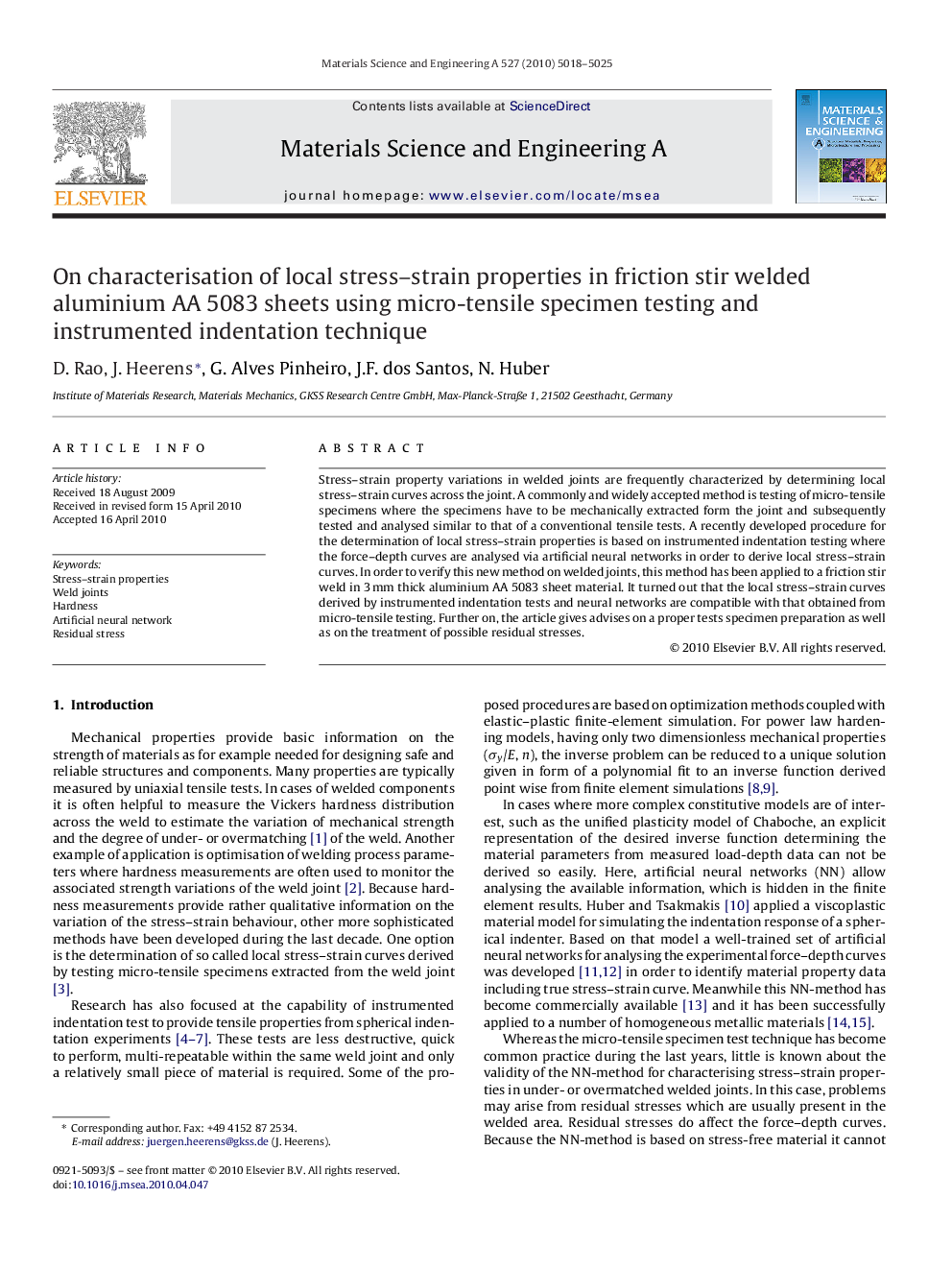| Article ID | Journal | Published Year | Pages | File Type |
|---|---|---|---|---|
| 1579099 | Materials Science and Engineering: A | 2010 | 8 Pages |
Abstract
Stress-strain property variations in welded joints are frequently characterized by determining local stress-strain curves across the joint. A commonly and widely accepted method is testing of micro-tensile specimens where the specimens have to be mechanically extracted form the joint and subsequently tested and analysed similar to that of a conventional tensile tests. A recently developed procedure for the determination of local stress-strain properties is based on instrumented indentation testing where the force-depth curves are analysed via artificial neural networks in order to derive local stress-strain curves. In order to verify this new method on welded joints, this method has been applied to a friction stir weld in 3Â mm thick aluminium AA 5083 sheet material. It turned out that the local stress-strain curves derived by instrumented indentation tests and neural networks are compatible with that obtained from micro-tensile testing. Further on, the article gives advises on a proper tests specimen preparation as well as on the treatment of possible residual stresses.
Related Topics
Physical Sciences and Engineering
Materials Science
Materials Science (General)
Authors
D. Rao, J. Heerens, G. Alves Pinheiro, J.F. dos Santos, N. Huber,
